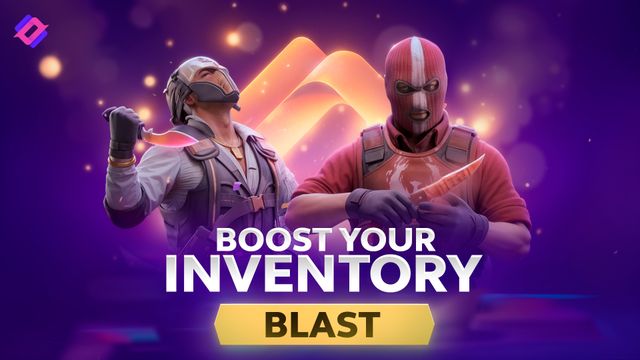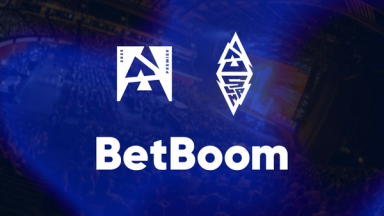CS2 rank up guide: How to climb elo in CS2


Whether you play on FACEIT or in Premier, how to rank up and climb elo in Counter-Strike 2 is a question that is always on the mind of CS players.
With Season 2 of Premier now underway, we thought it was about time for us to answer that question, because, as you know, BLAST is the home of pro CS.
So, if you dream of one day gracing the stage of a BLAST Premier event, this is the guide for you. In this guide on ranking up in CS2, we'll tell you everything we have learned in our years in the business.
How to rank up and climb elo in CS2
Practice makes perfect
The most important thing to ranking up in CS2 is to practice - and no, that doesn't mean just playing games in Premier or FACEIT.
For Counter-Strike players, there are many ways to practice efficiently. Whether that practice comes from deathmatch, aim trainers, other practice methods, or simply learning smokes and other lineups, each of these methods can add to your game.
Your practice should become routine. When you are practicing your aim you should work on both crosshair placement and recoil control, as forgetting one of the two may cost you in key moments.
Try setting an amount of time a day out for purely aim practice, but keep that time short. No more than 30 minutes. In that time, kill a certain amount of bots in differing ways, and also work on your spray control.
Likewise, your practice should also be versatile. Aim trainers are one thing, but there is only so much you can learn from aiming against bots. Apply what you learn in that routine time to deathmatch or retakes, learning to apply it against real people.

Aim isn't the only thing that needs refining
Whilst aim is a big part of Counter-Strike, it isn't everything. If you want to rank up in Counter-Strike 2, your brain will need to improve just as much as your aim.
An active way of doing this would be to play executes or retakes. These gamemodes can be found on community servers and will give you real scenarios against real players.
When playing these modes, observe how other players play out these situations and how you can apply it to your own game. Compare that with what you do well in those same situations, and where you struggle based on certain spawn locations.
Simply playing these modes to improve your aim isn't enough, you have to consider how they can improve other parts of your game.
In executes, you can learn how to effectively entry in CS2, what spots and positions people hold sites from, and how to pre-aim and punish them. In retakes, you will learn how to clutch in post-plant scenarios, whether that is on the CT side or the T side.
 Photo: Stephanie Lindgren
Photo: Stephanie LindgrenDefine a playstyle
Very few players can be consistent if they are just filling spots in every game they play. Although this is not the same in Counter-Strike as it is in games such as VALORANT or Marvel Rivals, it does still apply to CS2.
Low elo players may not realise that Counter-Strike does actually have roles, which are as follows:
- In-game leader (IGL) - The person in charge of calling the strats before each round and changes mid-round.
- Lurker - A more passive element on T sides, who waits on the extremities of maps to strike when they have an advantageous timing.
- Entry - The most aggressive player on a T side, the tip of the spear when it comes to attacking, taking space and going out first onto bombsites.
- AWPer - The role everyone wants to play, the AWPer is the team's sniper.
- Support - Often another passive player who is charged with throwing utility to support their teammates, a support player may also act as an aggressive player for the Entry to trade when taking fights.
- Anchor - A CT sided role, anchors are the primary defenders of the bombsites. They will often find themselves alone in defense of those sites.
- Rotator - A rotator is a more active player on the CT side, moving around the map based on information and often seeking to gain advantageous situations early in rounds.
 Photo: Michal Konkol
Photo: Michal KonkolTo define a playstyle, you must pick a role that most suits you on both the T and CT side roles. However, that doesn't mean that you have free will with these roles, as some combinations work better than others. These combinations are as follows:
- Support players on the T side are typically anchors on the CT side, which allows them to effectively support the starring rotator players.
- Lurkers are also often anchors on T side, although this is not as set in stone as it is for support players. This is because an anchor is a more passive player, which is more familiar to lurkers than it is for entries.
- Entries are often rotators, which allows them to utilise their natural aggression on both sides of the map.
- If you choose to be an AWPer, you will have to do so on both sides.
 Photo: Michal Konkol
Photo: Michal KonkolBy defining a role you can learn plays that work consistently across the various maps in the game. It means that you will also have consistent spots and positions, and will master them far faster than you would just by waiting to see where you need to play based on where everyone else on your team plays.
That doesn't mean that playing any role will aid you in climbing elo in CS2. For example, choosing to be an IGL outside of a team setting will likely lead in teammates becoming toxic, especially if your tone of voice isn't correct. People like to play their own game, and there is nothing you can do to change that.
Likewise, being a support player is heavily limited without being in a team setting. It's good to be able to throw flashbangs and smokes when your team is executing, but if your teammates don't listen or execute correctly, what good are you?
AWPing can also be a hard way to rank up in CS2. Everyone wants to be an AWPer, so you are most likely to be unable to play your playstyle consistently if you play as an AWPer.
Therefore, the best way to define a playstyle and rank up in CS2 is by playing as either an entry or a lurker, and by extension, a rotator or anchor. Of course, there are some games where you will be in too many unwinnable rounds as a lurker, or your teammates won't clutch up as an entry, but this is where you will have the most impact on your games.
 Photo: Michal Konkol
Photo: Michal KonkolWatching demos is important
Whether it is your own demos or the demos of pro players, watching demos can be key to climbing elo in CS2.
In pro demos, you will be able to see how players who play similar roles to you play them and apply that to your own game. This is especially effective for CT roles, as you will see the spots they play and the angles they hold, as well as the timings they take early fights.
However, it is important to watch correct demos. Some players rely on their aim more than others, and take more risks rather than consistently using their brain to create plays that you can recreate in your own games. This is why you should avoid aim-heavy players such as XANTARES, NiKo, and donk, and should instead watch players like ropz, rain, and sjuush.
Watching pro demos isn't the only way you can watch demos in CS2 to improve, you can also watch your own.
By watching your own demos you can see the mistakes you make, as well as highlight any flaws in plays that went well to see if you can make them more consistent in the future.
Watching demos is one of the best ways to climb ranks in CS2, so if you want to do so and don't know how, you can read our guide on how to watch CS2 demos here.
 Photo: Michal Konkol
Photo: Michal KonkolCommunication is key
Perhaps the most important thing to climbing elo in CS2 is communicating effectively.
If you play Counter-Strike without a microphone or without communication, you are not just a bad teammate, but you have no hope of ranking up.
Communication is one of the most important skills for any CS2 player, and there are many key terms to learn. You should also learn the callouts for spots and positions on maps, so that your teammates will quickly know where you mean.
It is also important to not over-communicate in Counter-Strike. Your information should be delivered quickly and efficiently, once and without panic in your voice even if the situation is stressful.
There are a list of important things for you to communicate in CS2, which can be treated as rules when playing the game:
- Say what you are holding.
- Say what you are not holding and where you teammates can be shot from.
- Say when you stop holding something.
- Say when you are throwing something.
- Say when something is being thrown at you.
- Say when you see someone and how many you see.
- Say when you are peeking, and when you are unpeeking.
Knowing these rules of communication are important, but there is one more rule of communication that you will need to follow if you are to rank up in CS2.

Stay positive
One of the biggest aspects of communication is to remain positive. Positivity can be one of the most important factors to climbing elo in CS2.
Even when your backs are against the wall and defeat feels imminent, defeat is never certain. Incredible comebacks have happened in CS countless times, and your games can feature them, too.
Praise your teammates when they get entries, praise them when they clutch a round. Even if you end up losing the round, it doesn't hurt to say "nice try."
Most importantly, never be toxic. You can't function properly as a team if you are screaming down each other's throats, and you can't hope to win if you aren't a team.
Remaining positive will always help you to rank up in CS2, and it will also mean that you might end up teaming with people again, which can only do you favours on your journey.











